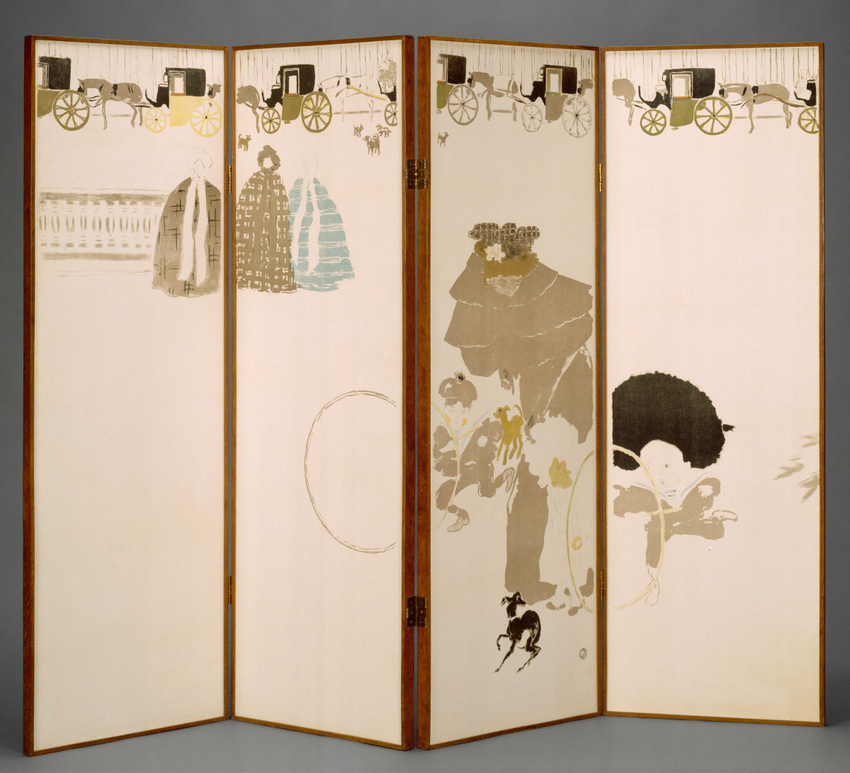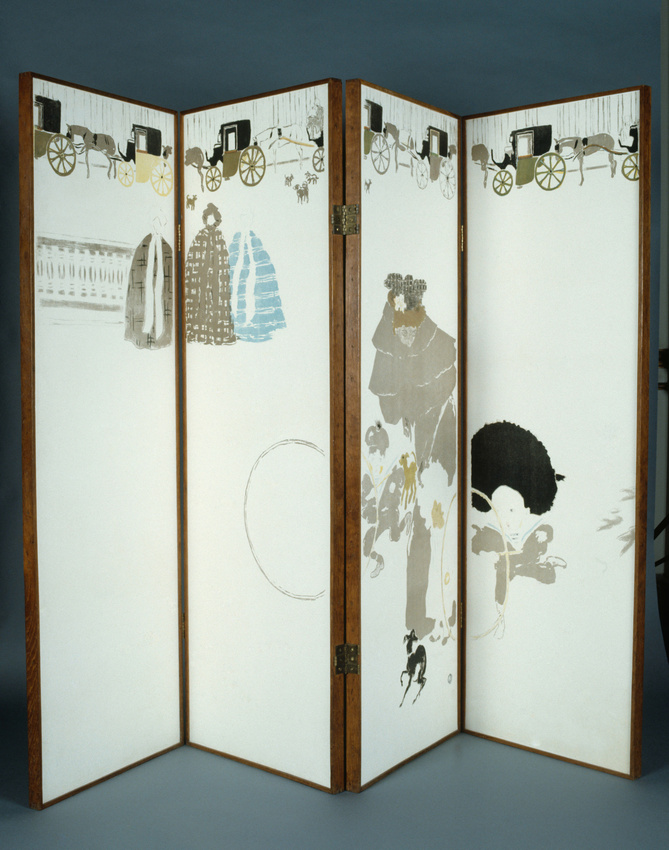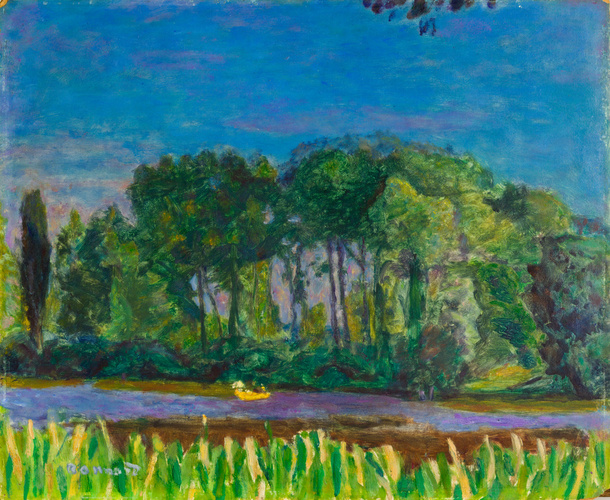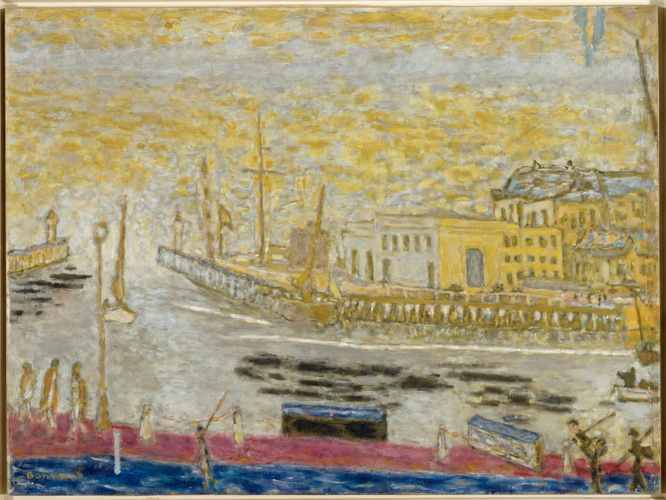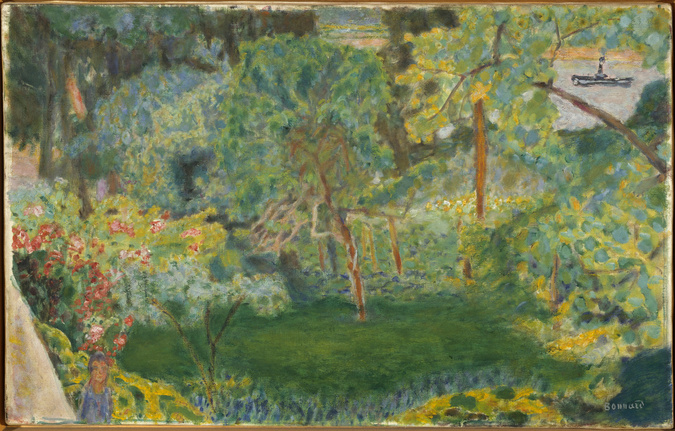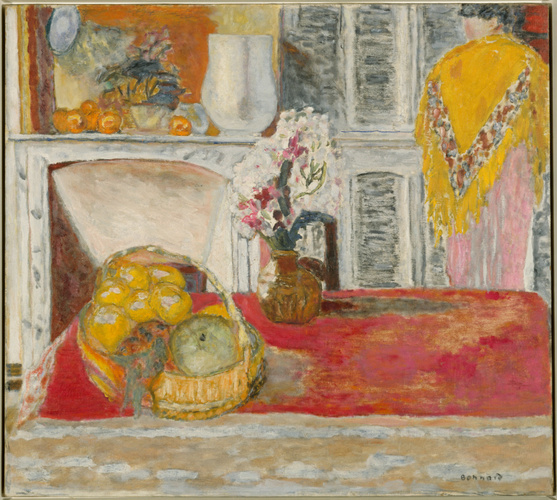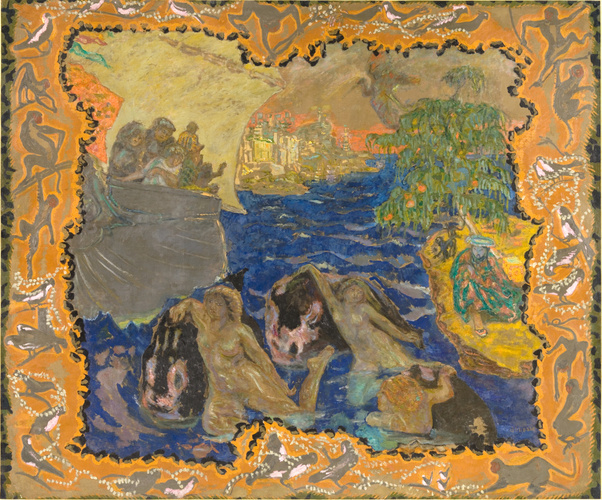Promenade des nourrices, frise des fiacres
In 1894, Bonnard wrote to his mother: "I am working on a screen [...]. It is of the Place de la Concorde with a young mother walking with her children, with nannies and dogs, and on top, as a border, a carriage rank, and all on a light beige background which is very like the Place de la Concorde when it's dusty and looks like a miniature Sahara".
From his very beginnings as an artist Pierre Bonnard was attracted to the idea of the screen. He first used this medium as a series of decorative panels in his Women in the Garden of 1891 (Musée d'Orsay and Zurich, Kunsthaus) and in an Rural Collection in 1894 (New York, Museum of Modern Art).
Nannies' Promenade, his third attempt, was more ambitious. Bonnard first produced a single picture (private collection) where the motifs, drawn from life, are arranged in tiers on a blank surface. The figures of the young woman and the boys, drawn with gentle humour, stand out in the empty surroundings. The nannies, dogs and carriages, presented on a smaller scale, give the impression of depth. The scene recalls the familiar theme of the park – a subject that inspired Vuillard, that same year, the panels of a large decorative work for Alexandre Natanson (five of which are conserved in the Musée d'Orsay).
Three years after painting this joyful work in distemper, Bonnard decided to transcribe it into five colour lithographs, published and sold as separate sheets, or mounted, as is the case with this exhibit. The work thus became an object of everyday use, going back to one of the major preoccupations of the Nabis: to bring art into domestic life.
